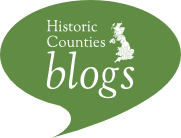The Directory is a table which lists:
Column 1: All the post towns of the UK in alphabetical order. Each postcode district in the LONDON postal area is treated as a separate Post Town.
Column 2: The postcode area (e.g. “LL”, “BT” etc.) in cases where 2 or more Post Towns have the same name. The postcode district (e.g. “E15”) in the LONDON postcode area.
Column 3: The historic county for each post town.
Column 4: Flag to denote whether a postal county was formerly (pre-1996) required (“Y”) or not (“N”).
How to include the historic county in a UK postal address
The following table lists the elements of a UK postal address.
Name of addressee Mr. T. Coupe Name of company (if relevant) T. Coupe & Sons Name of property (not needed if property has a no.) The Old Bakery Number and name of street 3 Frisby Road Dependent Locality (if needed) Hoby Post Town MELTON MOWBRAY Postal County (optional) Leicestershire Postcode LE14 3DS
Every UK address requires a post town and a postcode: these should be written in capital letters. Whilst a postal county is now an optional feature of an address, it can be included in any UK address if desired. It should be placed on a separate line between the post town and the postcode. The convention is that the postal county name refers to the County associated with the post town name.
To find the correct historic county for the following address
178 Chichester Road
ARUNDEL
NB18 0QB
one simply has to look up the post town, “ARUNDEL”, in the list of post towns in Column 1 and read off its historic county, “Sussex”, from Column 3. The address should then be written as:
178 Chichester Road
ARUNDEL
Sussex
NB18 0QB
How to include the historic counties in an address database
The Directory can be download for free as a CSV file.
The postal county field in an address database can easily be populated as described below.
(i) Outside of LONDON postcode area
The vast majority of post town names are unique. These can be identified by their being nothing in Column 2 of the Directory. The postal county field in an address can be populated by simply linking the post town in the address database with the post town in column 1 of the Directory and then deriving the historic county from Column 3 of the Directory.
There are a small number of duplicate post town names. In these cases, the postcode area is included in Column 2 of the Directory. The postal county field in an address can be populated by simply linking the post town and postcode area in the address database with the post town in column 1 and postcode area in Column 2 of the Directory and then deriving the historic county from Column 3 of the Directory.
(ii) The LONDON postcode area
In the LONDON postcode area, the postcode district is included in Column 2 of the Directory. The postal county field in an address can be populated by simply linking the post town and postcode district in the address database with the post town in column 1 and postcode district in Column 2 of the Directory and then deriving the historic county from Column 3 of the Directory.
How to manage Post towns where a postal county was not formerlly required
Prior to the introduction of “Flexible Addressing” in 1996, the Royal Mail distinguished between Post Towns for which a Postal County was postally required and Post Towns for which a Postal County was not postally required. Column 4 of the Directory denotes whether a Postal County was formerly postally required (“Y”) or not (“N”). There are good reasons for maintaining this convention and not including a postal county in addresses for Post Towns listed as “N” in Column 4:
- Many of these Post Towns are well-known large towns and cities. There seems little purpose in including Postal Counties in addresses in LIVERPOOL, COVENTRY, NORWICH, NEWCASTLE-UPON-TYNE etc, since these Post Town names are unambiguous and most people have a fair idea of their location.
- Others are towns from which a County takes its name (e.g. STAFFORD, NOTTINGHAM, etc.). Writing “OXFORD, OXFORDSHIRE” is rather unnecessary.
- The “LONDON” postal area actually covers parts of Middlesex, Essex, Kent, Hertfordshire and Surrey. However, it has never been the convention to include a Postal County in “LONDON” addresses and to do so would look incongruous.
- Certain islands names form Post Towns (e.g. ORKNEY, ISLE of MAN, ISLES OF SCILLY, GUERNSEY, JERSEY). Clearly these require no Postal County.
This approach can be affected in an address database either by not populating the postal county field for addresses in these post towns. Alternatively, the postally required Y/N flag could be populated into another database field and this field used to determine whether the county line should be included in viewed/printed/output addresses. This approach would mean that the county data would be available for address matching purposes.
